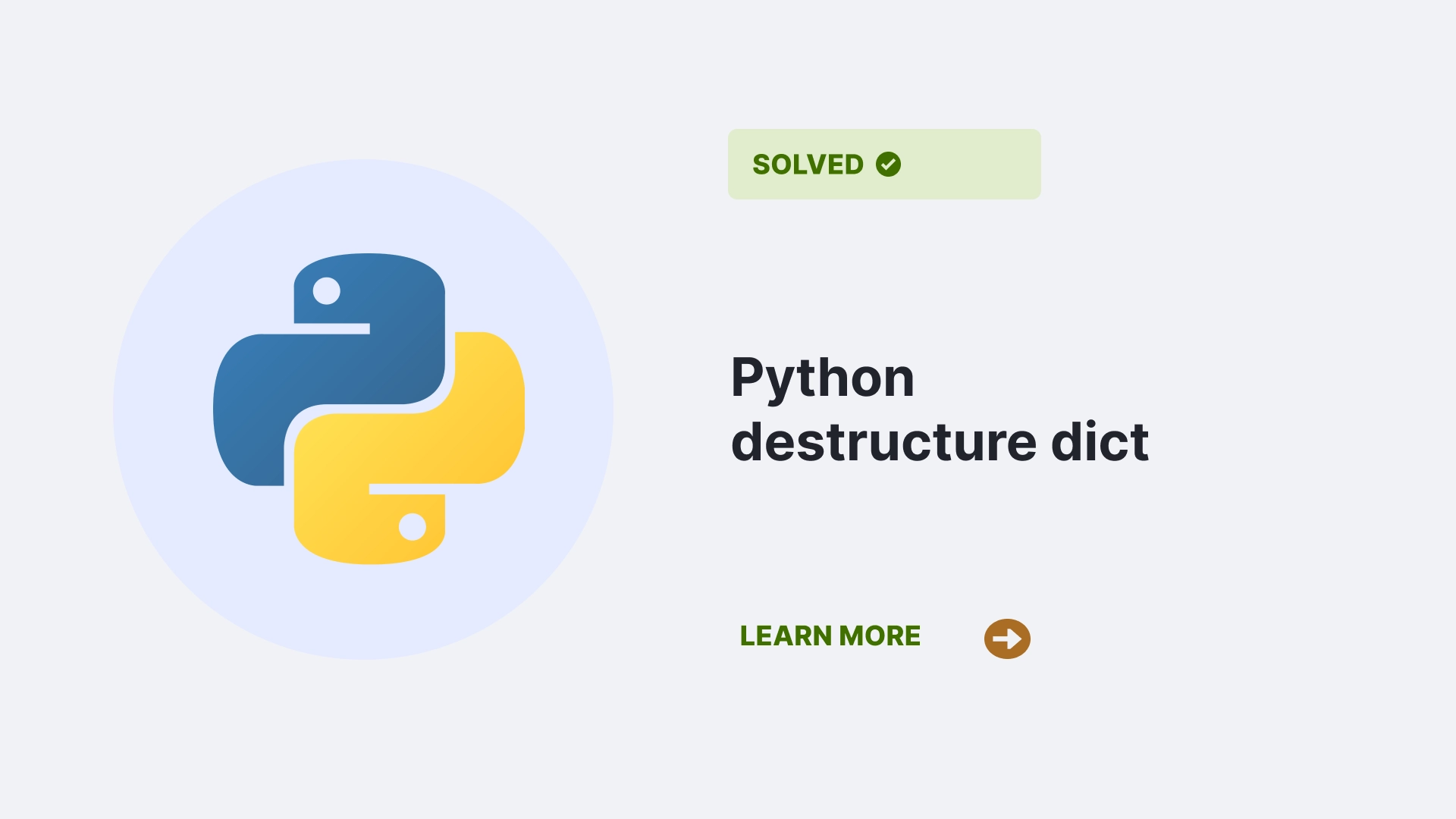In this post, we will talk about python destructure dict, the essentials of it, and its comparison with other programming languages, namely JavaScript. The feature we are going to discuss is “destructure dict” in Python.
Contents
What is “python destructure dict”?
Destructuring in Python is a way of extracting data from complex data structures (such as a dictionary), and assigning this data to variables. This way, you can work with these extracted data individually. In simpler terms, it means breaking down the dictionary into its individual elements.
Destructuring Compared to JavaScript
In JavaScript, Object Destructuring is a feature which allows a developer to extract the properties of an object and assign them to variables. However, unlike JavaScript, Python does not natively support destructuring dictionary objects. But we have workaround methods we can use!
Code Examples
Here’s one way to destructure a dictionary in Python using dictionary comprehension:
params = {'a': 1, 'b': 2}
a, b = params['a'], params['b']
print(a, b) # Output: 1 2In JavaScript, we would generally do this with Object Destructuring:
const params = {a: 1, b: 2};
const {a, b} = params;
console.log(a, b); // Output: 1 2Now, let’s see how we can replicate the same in Python.
Using the operator library in Python
A common solution that can be used to solve the python destructure dict is by using the operator library in Python.
from operator import itemgetter
params = {'a': 1, 'b': 2}
a, b = itemgetter('a', 'b')(params)
print(a, b) # Output: 1 2Using Helper Function
pluck = lambda dict, *args: (dict.get(arg, None) for arg in args)
params = {'a': 1, 'b': 2}
a, b = pluck(params, 'a', 'b')
print(a, b) # Output: 1 2In the script above we can use a helper function that gives the flexibility to list variable names in any random order and only destructure a subset of what is in the dictionary.
Direct Mapping
params = {'a_very_long_name': 1, 'b': 2}
# This method is more readable
a_very_long_name = params['a_very_long_name']
b = params['b']
print(a_very_long_name, b) # Output: 1 2All the presented examples show how to handle destructuring dictionary in a quite readable and understandable way.
FAQs
Does Python natively support destructuring dictionary objects?
No, Python does not natively support destructuring dictionary objects. However, there are workarounds to achieve a similar outcome.
Is Python inferior because it doesn’t support object destructuring like JavaScript?
No, not at all. The absence of this feature is simply due to a different design decision made by Python.
Conclusion
In conclusion, even though Python doesn’t natively support object destructuring like JavaScript, we do have methods around to extract values from dictionaries and assign them to variables. This functionality helps to manipulate and deal with complex data structures and is a fundamental element to be known by every Python coder. We hope that this article have the requires information to help you with the Python destructure dict.
References
Learn more about error handling at PythonClear

